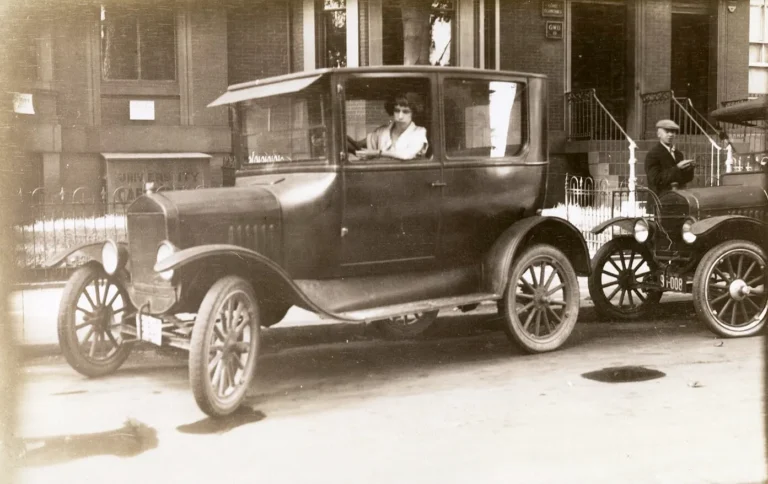The grueling Medical College Admission Test, or MCAT, was first devised in the 1920s by George Washington University professor Frederick August Moss. Originally called the Scholastic Aptitude Test for Medical Students, Moss developed the readiness test as a way to curb high dropout rates in medical schools. The MCAT paved the way for other standardized admission exams, like the SAT, and the many sleepless nights college-bound students still endure in preparation. But Moss likely wouldn’t have minded that sleepless legacy: To Moss, a psychology professor at GWU, sleep was a useless habit.
In November 1925, Popular Science writer Newton Burke described an experiment Moss conceived of to assess whether sleep was a “tragic waste of a third of the precious hours of a lifetime.” His study was one of several then cutting-edge experiments to assess the effects of sleeplessness and determine whether humans might be trained to do without sleep altogether.
A century later, the health-bestowing benefits of sleep have been well documented. Yet, in a curious way, a corollary to Moss’s central question still lingers—not whether sleep is a waste of time, but whether there can be too much of it.
A century ago, seven undergraduates stayed awake for more than two days
On a late-August weekend in 1925, Moss gathered seven undergraduates in Foggy Bottom, GWU’s bustling neighborhood sandwiched between the White House and Georgetown in Washington, DC. Their mission: stay awake for at least 60 hours, during which time Moss would periodically monitor vital signs and reflexes, administer intelligence tests, and assign simple tasks, like parallel parking a car to test alertness.
Among the volunteers was the aptly named Louise Omwake, just 17 years old and already an exceptional student and athlete. Her classmate, Thelma Hunt, reportedly sharp-witted and fiercely ambitious, had her sights set on a career in psychology. For Omwake and Hunt, the sleeplessness study was just one adventure in remarkable lives. Both went on to lead noteworthy careers—Omwake as a national education trailblazer, and Hunt as a psychologist, physician, and department head at GWU.

For the next two and a half days, the group of seven drove through the Virginia countryside, played baseball, and sang songs to stay awake, ultimately succeeding in their mission. To sum up Moss’s preliminary findings, Popular Science’s Burke wrote, “Too much sleep, like too much intoxication, actually may be harmful, deadening the activities of mind and body.”
In the 1920s, lots of people wondered if we really needed that much sleep
The 1920s obsession with sleep—or rather sleeplessness—echoed the cultural mood of the time, shaped by a rapidly industrializing America, and embodied by ambitious leaders like inventor Thomas Edison, who, in an 1889 interview with Scientific American, claimed, “I get through twenty hours a day. I find four hours sleep quite sufficient for all purposes.”
To his credit, Burke remained skeptical of Moss’s findings, and of other sleeplessness experiments conducted at the time, including one at the nation’s first sleep research lab at the University of Chicago, chronicled by Popular Science in July 1925. Summing up the results of such experiments, Burke concluded, “It is the consensus of scientific opinion that thus far there has been developed no way for the average man to reduce his sleep materially without a bad effect on his health.”
A century later, we know that sleep is really important
In the century since, scientists have confirmed Burke’s conclusion that sleep isn’t a waste of time, nor is it passive. Rather, it involves active, essential biological work. But sleep is still poorly understood. Only in the last two decades have scientists had the tools to tease apart the biological activity that happens at a cellular level during sleep.
Specialized laser lights, or optogenetics, can measure and activate neural pathways. And advanced imaging techniques like deep ultrasound can reveal what happens in different brain regions. Such research has found that during sleep the brain consolidates memories, repairs itself, and clears toxins, like beta-amyloid, a protein linked to Alzheimer’s disease. The immune system recharges during sleep and hormones are dispatched to regulate metabolism and cell growth.
Where in 1925 some scientists may have been caught up in the popular desire to dismiss sleep, today it is viewed as essential to health and quality of life. But there may be a twist.
Recent epidemiological analyses and systematic reviews involving millions of participants have uncovered a U-shaped relationship between sleep duration and health outcomes. Both too little sleep and too much sleep have been associated with higher risks of disease and early death. Some studies found that too much sleep has a higher association with poor health outcomes than too little sleep.
While the optimal amount of sleep varies by age range, for adults there is a sweet spot between seven and nine hours a night that yields the lowest risk of bad health outcomes. Importantly, these findings don’t suggest that too much sleep necessarily causes poor health, but rather that it is correlated with health risks. In other words, oversleeping may be a red flag for underlying issues such as chronic illness, depression, apnea, or other conditions that cause fatigue or interrupt sleep patterns. Habitual oversleeping is worth medical attention.
Related History Stories
Recent research also suggests that sleep regularity may be as important as duration. Consistent bedtimes and wake times contribute to lower risks of bad health outcomes. Individuals whose sleep times vary dramatically may face higher risks of conditions such as obesity, cardiovascular disease, and mood disorders. Good sleep hygiene emphasizes habits that encourage regular bedtimes as well as optimal sleeping conditions, like limiting stimulating screen time before bed and maintaining a dark and cool bedroom environment.
Not surprisingly, overnighters and sleepless marathons—such as cramming for a college admission test or final exam—also disrupt good sleep hygiene and quality sleep. According to The Evening Star, however, when the 1925 sleeplessness study ended, none of the students “experienced any difficulty falling asleep, although it is generally believed that when a person remains awake for such a long period he finds it difficult to slumber once he does take to bed.”
Even though most of us will, like Rip Van Winkle, spend more than 20 years of our lives taking to bed, today we know that sleep is not a “tragic waste,” but rather an investment in health, longevity, and quality of life. While too little sleep has been found to be harmful, the possibility that too much sleep might also be problematic—a warning sign—keeps one aspect of Moss’s original analysis alive.
Thelma Hunt, one of Moss’s star students, went on to earn a PhD and MD, eventually attaining Moss’s position as the chair of GWU’s psychology department, a post she held for 25 years. Of her many contributions to the field of psychology, Hunt is reported to have said, “all my life I’ve had a tremendous amount of energy, I think largely because of my physiological makeup, so I can do a lot of things, and not wear down right away.”
“Physiological makeup” notwithstanding, in what would have been an irresistible challenge to most teens in any century, on a sultry summer weekend a hundred years ago when seven undergraduate students proudly defied sleep for 60 straight hours. At the time, they couldn’t have known that their sleepless odyssey was on the forefront of a century-long effort to unravel sleep’s mysteries.



